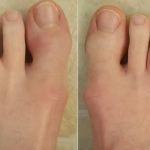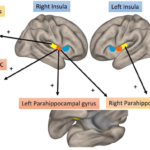In a study by Coates et al., 60 experts reviewed 40 patient profiles from an observational database of patients with psoriatic arthritis. Based on this review, a definition for MDA emerged: A patient is classified as achieving MDA when five of the seven following criteria are met: tender joint count of 1 or fewer; swollen joint count of 1 or fewer; a PASI score of 1 or less or psoriasis involving 3% or less of body surface area; patient pain visual analog scale (VAS) score of 15 or less; patient global disease activity VAS score of 20 or less; health assessment questionnaire (HAQ) score of 0.5 or less; and tender entheseal points of 1 or fewer.2
MDA can be viewed as a state of disease activity in psoriatic arthritis rather than a continuous measure. This is helpful when evaluating patients with such a complex, multi-faceted disease.
Research has shown which patients may be more likely to achieve MDA. Gossec et al., noted in a review that male sex, lower functional impairment at baseline (as assessed by the BASDAI and HAQ), low disease activity at baseline, shorter symptom duration and greater general well-being (as assessed by global VAS) predict who will achieve MDA after treatment with tumor necrosis factor-α inhibitors. Predictors of achieving sustained MDA include lower functional impairment, lower disease severity, lower enthesitis count and absence of dactylitis at baseline.3
Despite identification of these possibly encouraging predictors for achieving MDA, many challenges remain in the world of psoriatic arthritis. As Ng and Jadon point out in a recent article on unmet needs in psoriatic arthritis, there is not yet a method to predict the optimal treatment strategy to achieve MDA and prevent adverse effects of medications early in the course of psoriatic arthritis disease.4 In addition, much remains to be done to prevent and address important comorbidities that track with psoriatic arthritis, such as metabolic syndrome and psychosocial burden.
Tapering
Dr. Husni points out that the concept of achieving MDA, or remission, has allowed for consideration of what was once a novel idea: de-escalation of therapy. In the world of rheumatoid arthritis, many withdrawal studies have been published in recent years. These studies explore what happens when patients who have achieved clinical remission of their disease have their disease-modifying treatments decreased in dose or frequency or discontinued altogether. In the world of psoriatic arthritis, this is a newer concept being further explored.



